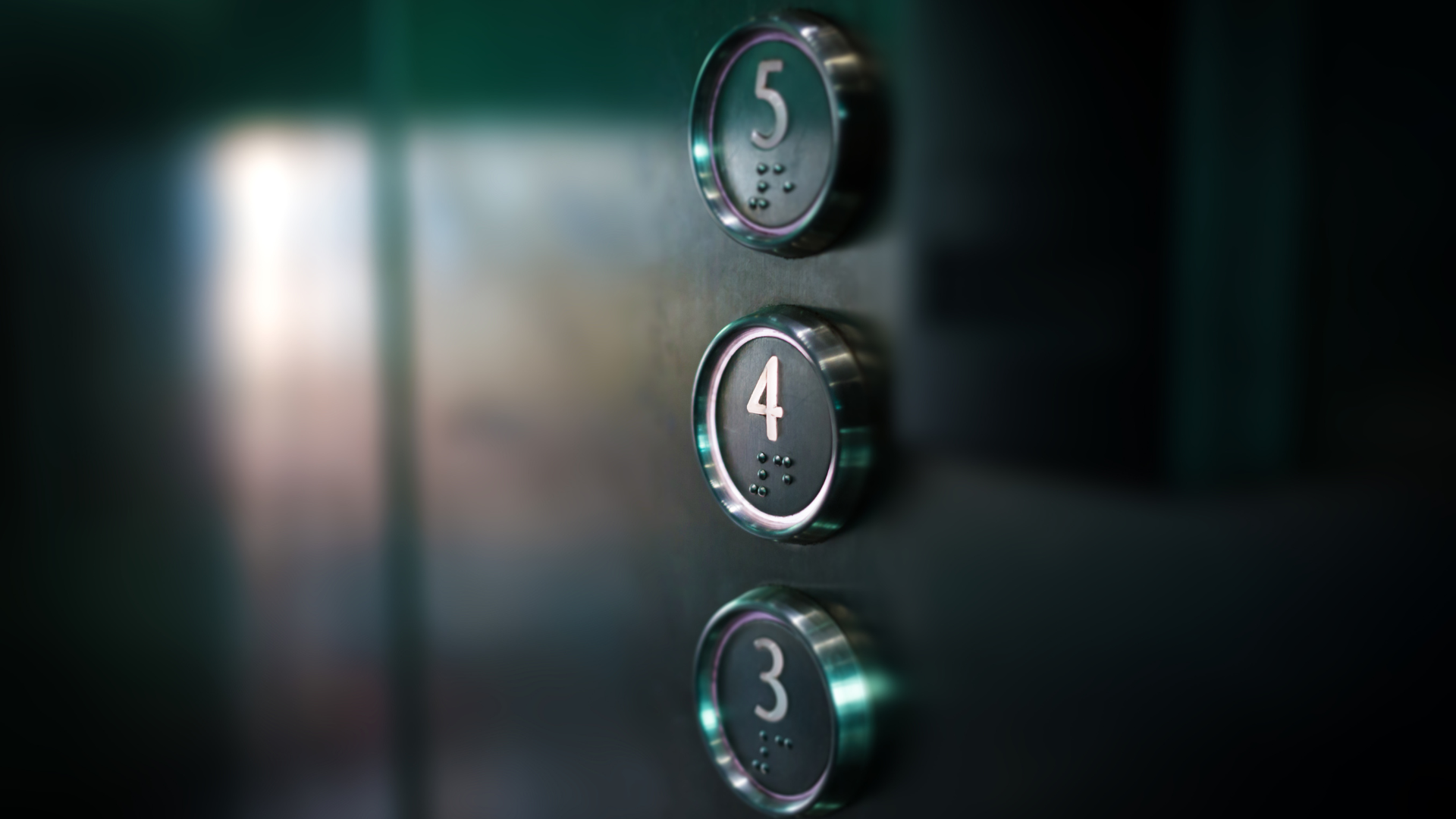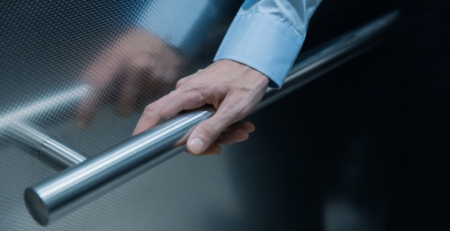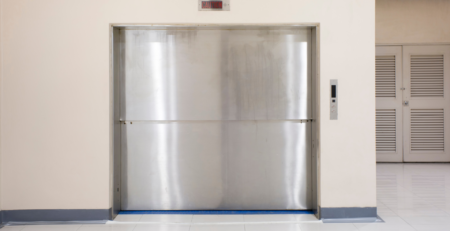Exploring Innovative Designs In Elevator Buttons
Elevator buttons touch our everyday lives, but we rarely think about their design. They’ve come a long way from simple up and down commands. Our article will explore how new designs make elevators safer and more enjoyable to use.
The Evolution of Elevator Buttons
The journey of elevator buttons has transitioned from simple mechanical push devices to complex, interactive systems. Over time, these buttons have evolved, incorporating cutting-edge technology to improve user experience and functionality in elevators.
Early designs
Early elevator control systems took a significant leap forward in 1892 with the introduction of the first elevator buttons. This innovation changed how elevators were operated, moving away from manual controls to more user-friendly push-button technology.
These initial designs marked the beginning of a new era in elevator technology advancements, simplifying operation and making elevators accessible to more people.
By 1924, another milestone was achieved with the ability to control elevators using electronic signals. This development introduced commercial property managers to a world where lift buttons could be integrated into complex systems, further enhancing efficiency and safety in buildings.
Early designs laid the groundwork for what would become an evolving journey of design innovations aimed at improving user experience and operational functionality in elevator panels.
Innovations in the 20th century
Moving from early designs, the 20th century marked a period of dynamic advancements in elevator button technology. The introduction of the first push-button elevator and operator-less models revolutionized how we interact with these machines.
This era saw the birth of automated elevator systems, allowing for seamless and more efficient operation without the need for manual control.
Elevator control systems underwent significant changes with the implementation of electronic signals in 1924, setting a new standard for modernity in this field. Innovations didn’t stop there; hightech solutions like holographic buttons emerged, offering users an interactive experience while enhancing safety through UV disinfection techniques during the COVID-19 pandemic.
These developments underscored a shift towards smart elevator solutions that prioritize user interface design and advanced functionalities, forever changing the landscape of vertical transportation.
Modern advancements
Modern advancements in elevator technology have revolutionized the way we view vertical transportation. The introduction of smart elevators, equipped with intelligent destination control systems, has optimized traffic flow and reduced wait times in high-rise buildings.
These systems analyze the number of requests to specific floors and group passengers going to the same destination into the same lift, making elevator travel more efficient.
Innovations don’t stop there; holographic elevator buttons and voice-activated controls are setting new standards for accessibility and hygiene, eliminating the need to physically touch buttons—a significant advantage in today’s health-conscious world.
Adaptive control systems further enhance user experience by adjusting operational parameters in real-time based on traffic patterns, ensuring optimal service levels during peak hours.
This seamless integration of advanced technology makes elevators not just a mode of transport but a sophisticated element of modern architecture.
Next, we explore how these innovative designs influence user interfaces within elevators.
Innovative Designs in Elevator Buttons
Elevator buttons are getting a major upgrade. Designers now focus on creating controls that enhance both functionality and user interaction.
Touchless controls
Touchless controls are reshaping the future of elevator technology, offering a hygienic and convenient solution for commercial buildings. Smart building solutions now include touchfree elevators that eliminate the need to press physical buttons, reducing the spread of germs and enhancing user safety.
This handsfree technology leverages sensors or gesture recognition, allowing users to select their destination without making contact with elevator panels.
Incorporating no-touch elevator panels into modern designs meets the growing demand for sanitary elevator controls. Property managers find these innovations particularly appealing as they provide a safer and more reliable design amidst global health concerns.
Notably, advancements in touchless technology also involve noncontact tactile braille technology, ensuring accessibility while maintaining hygiene standards. By integrating such smart solutions, buildings offer a more secure environment for occupants, making every ride smoother and contact-free.
Intuitive user interfaces
Moving from touchless controls, we shift our focus to the intuitive user interfaces of innovative elevator buttons. These interfaces leverage simple navigation graphics and easy-to-use control modes, significantly improving passenger floor selection.
With designs that prioritize noncontact operation and straightforward guidance, users find it effortless to get where they need to go without confusion.
Key to enhancing user experience in elevators, intuitive designs help distinguish primary functions like floor selection from other elevator features. Property managers will appreciate how such user-friendly interfaces increase the usability of their elevator systems, making daily operations smoother for all occupants.
Design considerations include clear labeling and responsive feedback mechanisms that guide users effortlessly through their journey across floors.
Smart destination dispatch systems
Building on the advancement of intuitive user interfaces, smart destination dispatch systems represent a significant leap in elevator technology. These innovative systems employ advanced algorithms to optimize traffic flow and reduce wait times for passengers.
By analyzing real-time data, they efficiently direct elevators to where they are needed most, effectively improving building efficiency and passenger convenience.
Smart destination dispatch systems excel at enhancing elevator handling capacity and streamlining building design. They use control software that can batch stop requests from multiple passengers going in the same direction.
This approach not only minimizes travel time but also plays a crucial role in optimizing overall building operations. For commercial property managers looking to upgrade their facilities, integrating these systems offers a clear path towards elevating both functionality and satisfaction among building users.
Haptic feedback
Haptic feedback brings a revolutionary change to elevator design, offering users sensory confirmation through vibrations or sound cues. This innovative feature ensures that users receive immediate acknowledgment of their button presses without needing to look for visual signs.
By integrating haptic feedback into elevator buttons, the experience becomes more intuitive and satisfying, especially in bustling commercial environments where efficiency and quick responses are valued.
The introduction of midair haptic technology pushes the boundaries further by eliminating physical contact with buttons. Users can select their desired floor with gestures in mid-air, receiving touchless tactile braille or other sensory feedback as confirmation.
This advancement not only enhances user experience but also aligns with hygiene concerns by reducing common touchpoints. For commercial property managers looking to modernize their elevators, incorporating haptic feedback represents a significant step forward in improving both functionality and safety for all users.
Interactive displays
Elevator buttons with interactive displays are transforming the user experience by providing engaging and informative interaction for passengers. These panels, equipped with touch screens and augmented reality technology, make every elevator ride more than just a trip between floors.
They turn it into an informative journey where users can access building information, news updates, or even weather forecasts at their fingertips.
Modern elevator designs incorporate smart elevators that feature sleek touchscreens to facilitate a user-friendly interface. This innovative approach not only enhances passenger engagement but also streamlines the selection process for floors or destinations within a building.
Properties equipped with these advanced systems offer tenants and visitors a glimpse into the future of vertical transportation, setting new standards in elevator user experience enhancement.
The Working Principle of Elevator Buttons
Elevator buttons play a crucial role in directing the lift to the desired floor. They send a signal to the elevator’s control system, activating the machinery to move the cab accordingly.
Circuit and illumination
Understanding the circuit and illumination of elevator buttons is crucial for maintaining an efficient system. The working principle revolves around a simple yet effective mechanism.
Once a user presses a button, it activates the circuit connected to that specific floor or function. This action triggers the indicator lights above each button, illuminating the selected floor or indicating the active button.
Such straightforward interactions ensure users are clearly informed about their selection and the elevator’s current operation.
Indicator lights play a significant role in enhancing user experience by providing immediate visual feedback. They light up to show which floor number has been pressed, ensuring there is no confusion regarding selections made by users.
This feature not only adds to the convenience but also improves safety by confirming that inputs are correctly registered by the system. Thanks to these illuminated push buttons labeled with floor numbers or letters, passengers can easily navigate their way through high-rise buildings efficiently and with confidence.
Stops
Elevator buttons serve the crucial function of directing the elevator car to make stops at desired floors. Users press floor selection buttons on the elevator control panel to choose their destination levels.
This action triggers a response from the system, confirming that it has received a command to halt at specific floors. Since most car control panels lack an “unselect” option, selecting the correct floor requires careful attention to avoid unnecessary stops and ensure efficient use of the elevator.
Floor stop controls are designed with simplicity and ease of use in mind, keeping interfaces straightforward for all users. This design choice minimizes confusion and prevents potential misuse of the elevator system by avoiding complex commands.
The next section will discuss how these designs impact user experience and interface design in elevators.
Conclusion
Elevator buttons have traveled a long journey from simple push mechanisms to advanced touchless systems. These innovations make elevator use more hygienic and intuitive for users. Have you thought about how these changes could improve your property? The shift towards smarter elevators enhances both the value and appeal of commercial spaces.
Beyond just functionality, these designs offer an improved user experience. Elevator technology continues to break new ground, promising even smoother rides ahead. For all your elevator needs, contact City Elevator!
FAQs
1. What makes elevator buttons innovative?
Innovative elevator buttons use touchless technology or have features that make them easier to use for everyone.
2. Can these new designs help people with disabilities?
Yes, the new designs can help people with disabilities by making the buttons larger, more visible, or touchless.
3. Are innovative elevator buttons more expensive than traditional ones?
Innovative elevator buttons might cost more because of their advanced technology and materials.
4. How do touchless elevator buttons work?
Touchless elevator buttons work by using sensors that detect hand gestures or movements without needing physical contact.
5. Will all elevators have these innovative designs in the future?
It’s likely that many elevators will adopt these innovative designs to improve accessibility and hygiene.

Sam Bruno is the driving force behind City Elevator, elevating the standards for elevator installation, maintenance, and modernization services. With an extensive background in mechanical engineering and a deep understanding of elevator systems, Sam has positioned City Elevator as a trusted provider of innovative and safe vertical transportation solutions. His commitment to excellence and safety ensures that every project delivers not only on functionality but also on reliability and design, enhancing the user experience for buildings of all types.






